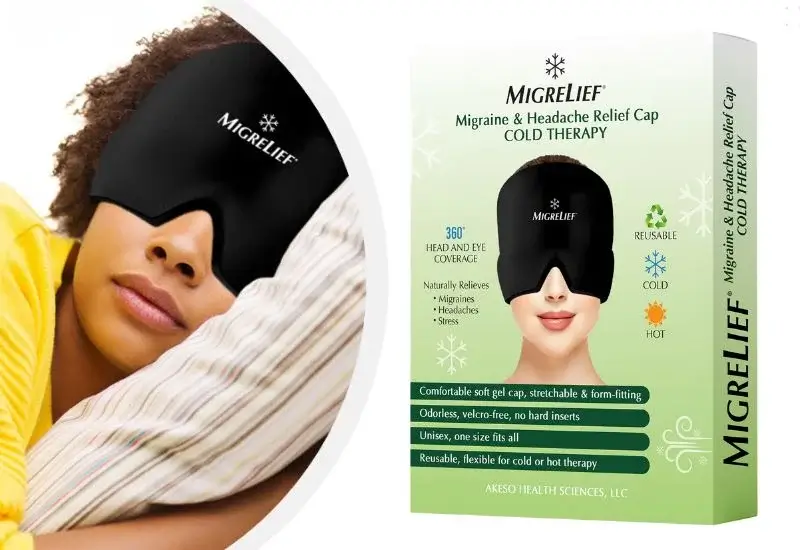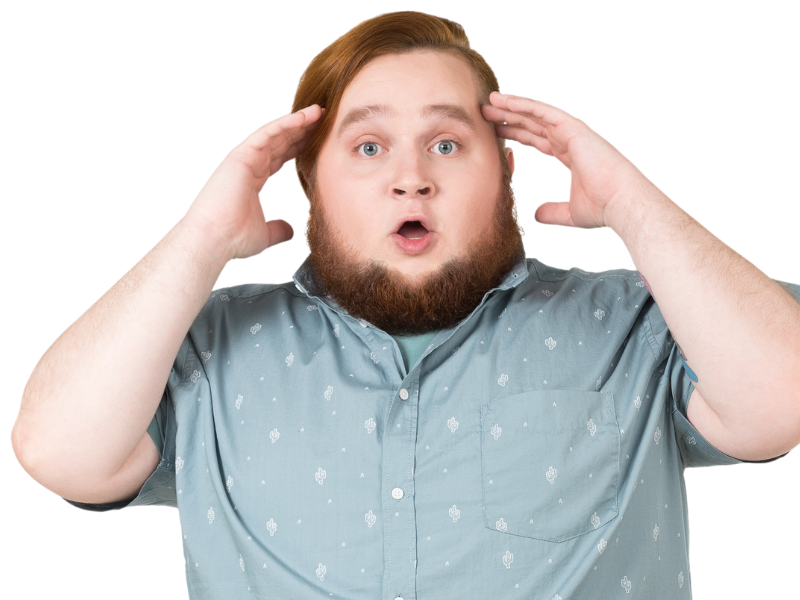Cold therapy is one of the simplest and most accessible natural remedies to alleviate pain and discomfort. Different cooling agents have been used as complimentary migraine therapies for more than 150 years. So much so that cold therapy is, nowadays, the most common self-administered treatment for people experiencing migraine without aura and the second most common for migraineurs with aura.
What is Cold Therapy?
Ever since humans discovered how to manipulate temperature – the measure of the average kinetic energy of a substance – we have been looking for ways to use it to our advantage. One of the most obvious applications of this knowledge today is cooking, where we use various degrees of temperature to heat or cool down different foods. Another inventive way of using temperature is as a therapeutic agent by applying heat or cold to different areas of the body to reduce inflammation, ease pain, and even loosen up stiff muscles.
Treating different types of injuries or ailments calls for using different ranges of temperature. Heat therapy – which improves circulation and blood flow – is better for treating muscle pain and stiffness, but it shouldn’t be used in swollen areas or open wounds. Cold therapy, also known as ice therapy or cryotherapy in some settings, is an affordable and easy way of reducing inflammation and alleviating sharp pain.
Cold Therapy for Migraines
The first time cold was used as a treatment for migraine headaches was in 1849 when James Arnott, an English physician and cryotherapy pioneer, documented the benefits of using a mixture of ice and salt crystals to ease headache pain. Since then, numerous clinical trials have explored the effects of this technique and tested different ways of applying cold for relieving migraines.
For instance, in a 2006 pilot study, 28 female migraine patients were asked to wear a frozen gel cap for 25 minutes during migraine attacks and record the details of their headaches in a diary. Their results showed that cold therapy alone was able to mitigate 50 percent of attacks. But the mechanisms by which cold therapy reduces migraine pain remain unclear, according to the authors of the same study.
One of the most popular theories of how this mechanism may work suggests that the cold sensations induce an anesthetic reaction by slowing the transmission of pain signals from nerves to the cerebral cortex. Cold therapy has also been shown to promote vasoconstriction, i.e., to contract blood vessels, which may lower pain sensations by limiting blood flow in the targeted areas.
Cold therapy, of course, is not a miracle treatment, and some migraineurs don’t see any improvements in their pain with this method. But if you’ve only tried applying ice packs to your head during migraine attacks, you may want to try them on your neck the next time you are in pain.
A clinical trial looking at the effects of neck cooling for the treatment of migraines, 64 participants were randomly assigned into two groups. One group received a frozen neck wrap to wear during migraine attacks, and the other wore the same neck wrap at room temperature. Their findings indicated that applying a cooling agent in the neck, near the carotid artery (a major blood vessel that supplies blood to the brain), significantly reduced self-reported pain in participants with migraine headaches.

Home Made Ice Packs – Flexible and Squishy – Do It Yourself
Reusable cold therapy caps, such as MigreLief’s new Migraine and Headache Relief Gel Cap can be easily purchased online. However, if you want to create your own ice packs for pain or injuries, here are various ways to do it.
1. Alcohol & Water Ice Pack:
This is a simple recipe that consists of 1 part alcohol to 3 parts water as a rule of thumb. Adding alcohol to water will keep it from freezing completely. To make this method in a quart size Ziploc bag, combine 1½ cups of water with a ½ cup of rubbing alcohol. Seal and put in the freezer for several hours or overnight. Sometimes you can also find a Green Colored Wintergreen Rubbing Alcohol which gives the ice pack a little bit of color. You can adjust the recipe for use in smaller snack size zip-lock bags or larger ones by keeping the 1:3 ratio of alcohol to water.
2. Sponge and Water:
You can make an ice pack simply with just a clean sponge and water. The sponge will be hard and firm with no flexibility when first taken out of the freezer. Do not force it to bend too much at first, or it will snap. As it warms up it becomes moist and soft again, but not drippy. You can put it in a baggie if you want, but it isn’t absolutely necessary.
3. Dish Soap or Glycerine and Water Ice Pack:
The best part of a gel ice pack is its squishy, flexible nature. The time frame for this method is more important, depending on what type of ice pack you want. It can be soft and squishy if you freeze it for a couple of hours. The longer you leave it in the freezer, the more icy and firm it will become. Either way, it’s a simple method that can be made in any size Ziploc bag You can hold it against your head or mold it to the body part in question (or in pain). It holds its coldness well. Just fill a plastic zip-lock bag with corn syrup or dish soap (no need to measure) and freeze. The corn syrup or dish soap will not freeze solid making it a perfect cooling therapy.
4. Salt and Water Ice Pack:
Salt changes the freezing temperature of water so that your DIY ice pack is more slushy-like. Simply combine two tablespoons of salt for every two cups of water in a Ziplock bag and freeze for a few hours. A quart Ziploc bag is the perfect size for combining 2 cups of water and 2 tablespoons of salt. Regular table salt is fine to use.
A final word…
Whether you suffer from chronic or episodic migraines, finding a combination of treatments that work for you can take some trial and error. Using an ice pack is an affordable and effortless way of improving migraine pain at home, but you may also want to try other approaches like keeping a migraine diary, avoiding triggers, and adding targeted nutritional support by taking daily supplements to complement your natural regimen.


